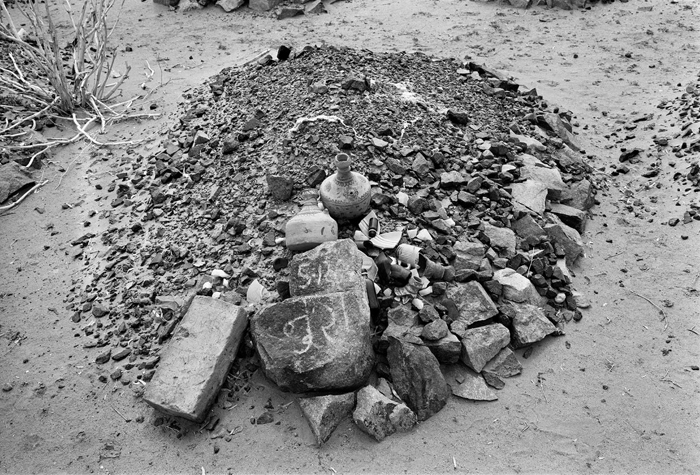Lynn Hershman Leeson: Anti-Bodies at HeK, through 5 August
A pioneer of both feminist and new-media art in the 1960s and 70s, Lynn Hershman Leeson has for decades engaged with issues relating to technology (specifically biotechnology) and the body, and how technological evolutions might shape our concepts of identity and individuality in the future. At Hek (Haus der elektronischen Künste), Hershman Leeson’s new show is conceived as a scientific laboratory that looks at the increasing influence of genetic engineering of human life. Expect to find a reworking of the American artist’s multimedia installation The Infinity Engine (2011) (which includes, among others, a gene lab, a flurry of archival pictures from genetic experiments and genetically-modified glow-in-the-dark goldfish in tanks); interviews with scientists discussing recent techniques and methods of genetic engineering, regenerative medicine and bioprinting; and a new anti-body, named after the artist and developed in collaboration with the pharmaceutical company Novartis. What does it cure? You find out.

Theaster Gates: Black Madonna at Kunstmuseum, through 21 October
A wave of revisionism has been sweeping through museums in Europe lately, which have been attempting to address some of the biases of their own collections, either through rehanging – think of the current sprawling revisiting of the Nationalgalerie’s collection titled Hello World. Revisiting a collection – or, as is the case at the Kunstmuseum, by inviting contemporary artists like Theaster Gates to ‘engage’ with their ‘Eurocentric collections’. And so Gates took this opportunity to propose an alternative history, that of the Black Madonna – a cult seen to originate in the Byzantine Empire, vowed to depictions of a dark-skinned Virgin Mary found across Europe – to explore issues of beauty and race throughout the centuries. Spread across two of the museum’s venues (the new building and the Gegenwart one), Gates is showing a series of new and existing work, conceived and presented in dialogue with some of the museum’s collection, as well as, in the museum’s Gegenwart building, a selection of items from the photography archive of Ebony and Jet magazines, both leading voices of the Black Pride movement in the US – in turn tracing a genealogy of black women throughout centuries.

Gauri Gill: Traces at Museum Tinguely, 13 June – 1 November
A circular mound of stones, broken rock and natural debris is piled up on scrubby desert floor. On the largest of the rocks someone has scratched the initials ‘S.R.’. An urn lies on its side at the peak of this pile. This is a grave in West Rajasthan, the Indian state that Gauri Gill has turned her lens to repeatedly, building an extensive, ongoing, photographic project titled Notes from the Desert, working with the nomadic Jogis, Muslim migrants and Bishnoi peasants who live there. Shot in black and white Gill’s large format photograph emphasises how harmonious this burial site is with the landscape it is built upon, especially if one were to compare it to the ornate and monumental obelisks of Western graves. The dead are not being forgotten, the image seems to imply, but the human body enjoys no special status, and must return to nature from whence it came. The untitled work, shot in 2009, is one of a number of images taken by the artist of these ad-hoc memorials, that this exhibition pairs with the artist’s Birth Series, photographs of a baby emerging into the world. Birth and death are age-old concerns for art, yet with Gill’s investment into her subject matter, this exhibition promises to be a poignant one.

Rodrigo Hernandez: THE GOURD & THE FISH at SALTS, 14 June – 24 August
For his 2017 exhibition at Madragoa, Rodrigo Hernandez filled the Lisbon gallery with a gridlike floor sculpture in a suprematist palette of red, yellow, blue, white and black. Attached atop of this frame, which the visitor was forced to carefully navigate, were a series of metal sheets engraved with a generic sexless figure that has been a reoccurring presence in the Mexican artist’s work. One became incredibly aware of one’s own body (be it a clumsy body or, on the night of the opening, a drunk body) within this context. A version of Plasma was shown at the Liste fair in Basel the same year, but this is Hernandez’s first show proper in Switzerland. At SALTS, expect something different (the artist is unpredictable: for a solo show in Riga last year he outsourced production to local children), though the body in space is a reoccurring subject for the artist. According to the off-space (a refreshing change from the commercial and institutional juggernaut that Art Basel brings to the city), Hernandez took a fifteenth-century Zen ink painting as inspiration for this show, Catching a Catfish with a Gourd, the title describing a man performing contortions as he attempts his seemingly impossible task.

Night Fever. Designing Club Culture 1960 – Today at Vitra Museum, through 9 September
Starting with the emergence of club culture in the 1960s, Vitra’s Night Fever survey focuses on the evolution of nightclubs as spaces for experimentation and countercultures throughout the decades. This history, traced via a complex mix of furniture, graphic design, architectural models, artworks, films and fashion, will take you on a journey from the rise of disco to rave culture, with stops at Gruppo UFO’s beach club Bamba Issa (1969), New York’s Studio 54 (1977) and Area (1983) to Berlin’s Tresor (1999) and Berghain (2004). No bouncer or spotter at the door here, just the usual entrance fee.
Online exclusive published on 12 June 2018
